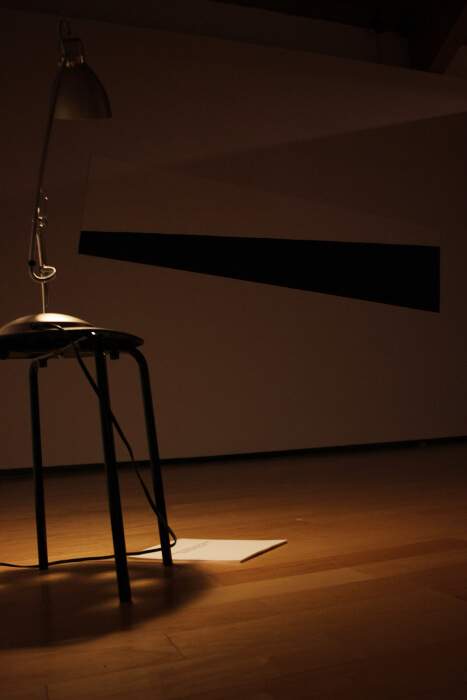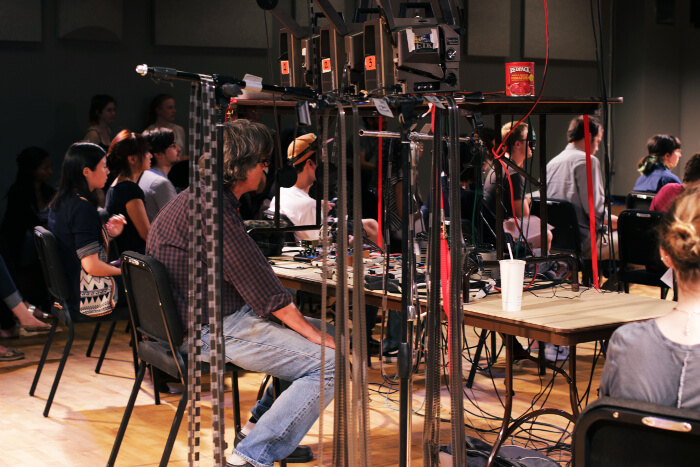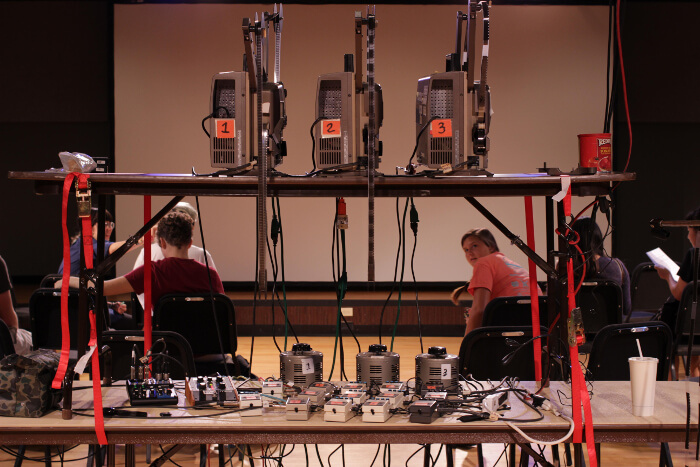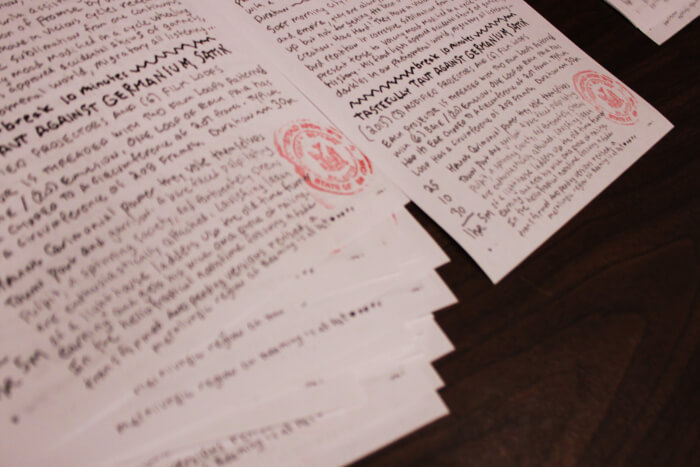McClure created an installation in the Denison Museum called Materially Effecting the Cause, which was on display from September 23 - 27, 2015.
The piece consisted of a 12’ x 3’ piece of asphalt felt (a thick paper material typically used for roofing), with a chalk line snapped diagonally across it and painted on one half with white gesso. Instead of hanging the piece with its bottom border parallel to the ground, he leveled it to the diagonal line. The stark blackness of the asphalt felt contrasted with the white paint. A single lamp illuminated the space and diffused sunlight streamed inside, creating linear shadows on the walls at different times throughout the day. The seemingly crooked composition juxtaposed against the museum walls provoked meditations on architecture, light, gravity, perspective, and space. In McClure’s own words, “What is the cause somebody might ask? He could not get it all straight; but still he could not help respecting what appeared to him. Plainly there was something wrong somewhere” (from Theodore Dreiser’s An American Tragedy, which McClure was reading at the time of his visit).
On September 24, McClure presented one of his trademark “projection performances” in the Knapp Performance Space. Utilizing three modified 16mm projectors, over ten 16mm film loops, twelve guitar pedals, and three variable transformers, McClure performed two cameraless projection pieces. The first, Parallel Rows Cover Every Foot, featured negative and positive loops of found footage and a loop of clear film base patterned with opaque emulsion. The second, Tastefully Taut Against Germanium Satin, used only loops composed of clear film base and opaque emulsion, with two loops layered in each projector.
Both pieces layer sound and image. The found footage in Parallel Rows Cover Every Foot included narration. The loops of clear base with emulsion produce sound when they pass over the projectors’ optical sound readers, creating metronomic analog noises that increase in amplitude. McClure used the guitar pedals to process and modulate the audio signals, and the variable transformers were used to manipulate the light intensity of the projectors, generating flickers and flashes. As each performance crescendoed, the interplay of light and sound produced an audiovisual trance.
Following the performances, when asked why he works with film projection, McClure said, “I chose this medium because it tends to dematerialize things…and I love being able to override the projector’s abilities.” Ultimately, McClure’s projection work challenges conventions of cinema by exploiting the materiality of 16mm film and the limitations of the film projector.
For more on Bruce McClure’s work, read this interview from Cinema Scope.











